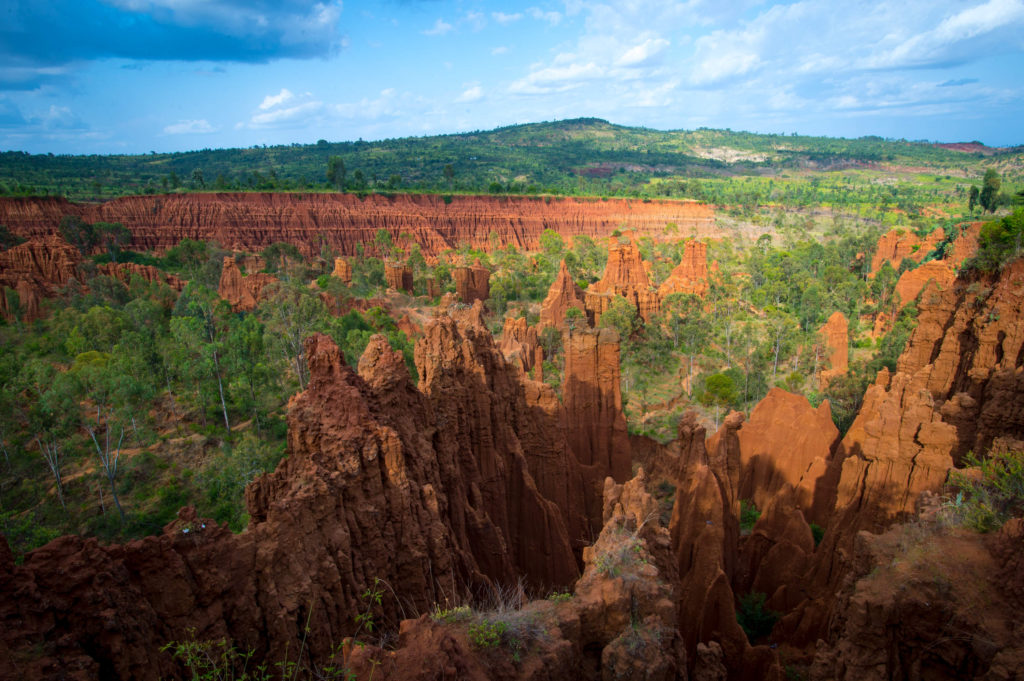The third issue of The Ethiopian Messenger is now available ! Click below to read it.
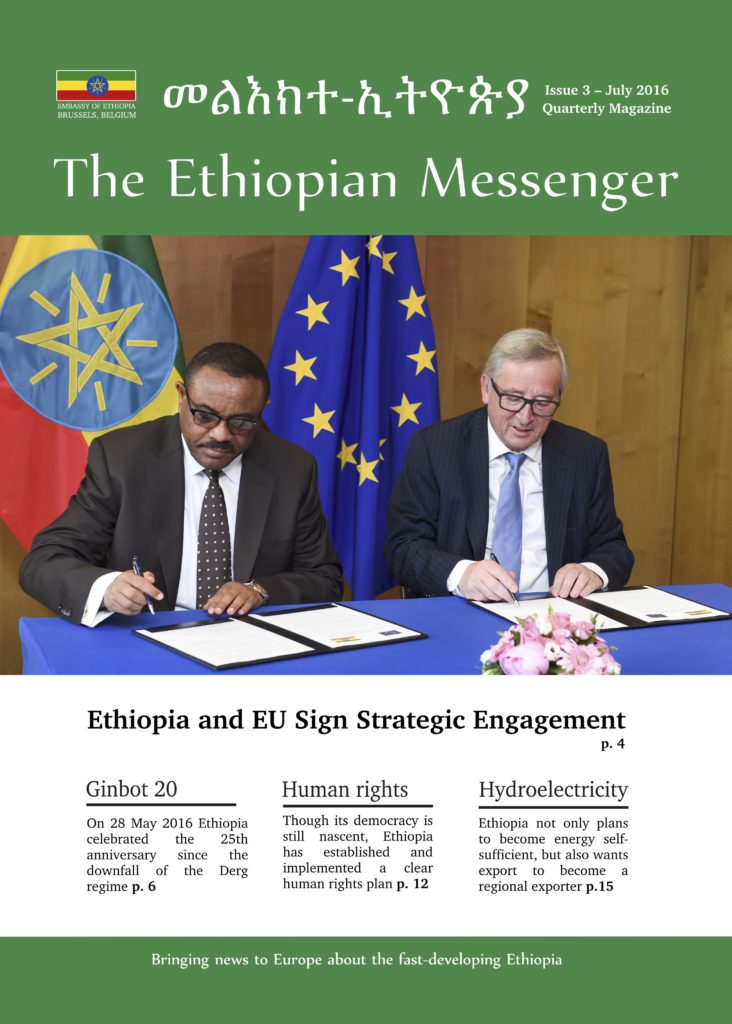
The third issue of The Ethiopian Messenger is now available ! Click below to read it.
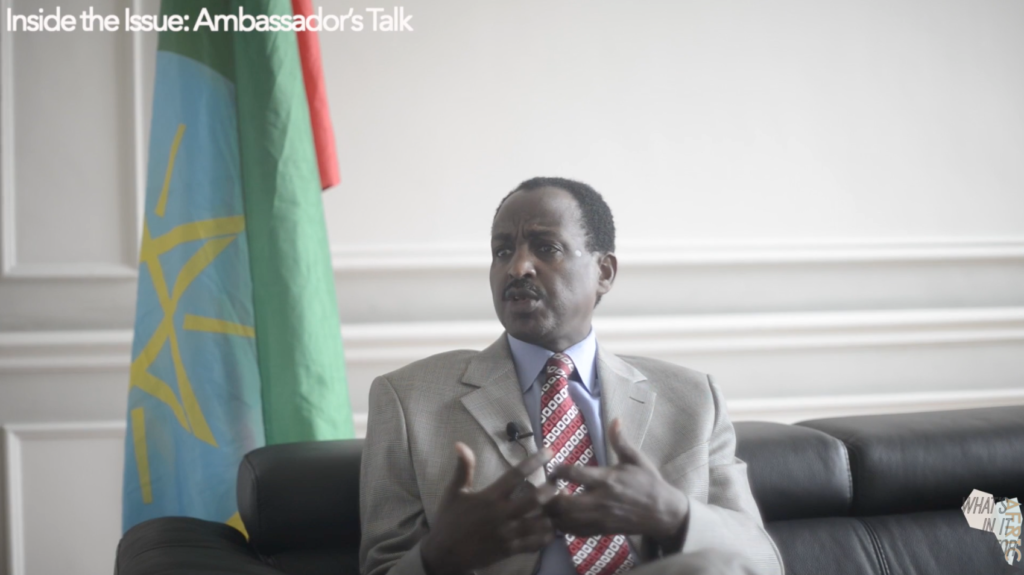
Welcome to a special edition of Inside the Issue show – Ambassador’s Talk! Where we speak to African ambassadors about the state of EU-African relations with a focus on their national relationship with the EU. This time around Ethiopian Ambassador, Teshome Toga talks to What’s in it for Africa about the African economy, EU-Ethiopia and EU-Africa relations, Trade and Migration.

Kibret Abebe Tuffa is the founder and owner of Tebita Ambulance Pre-Hospital Emergency Medical Service, a social enterprise that developed the first private ambulance service in Ethiopia. He was also a panelist at the 2016 European Development Days in Brussels in the debate “Achieving the Sustainable Development Goals: How can we make business more social?” hosted by the British Council in partnership with the World Bank.
Learn More
Press Release on debate at the European Development Days
Press Kit on Tebita Ambulance Service
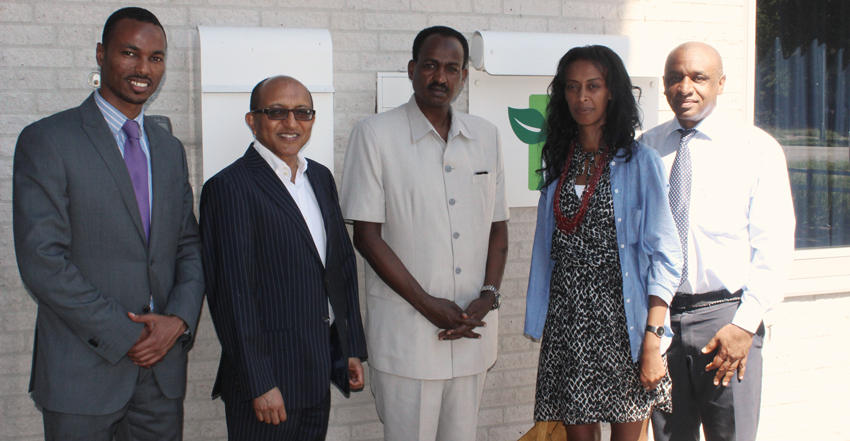
During his visit, H.E. Teshome Toga highlighted the significant role that agriculture plays in Ethiopia’s economy, not only as a source of livelihood for over 80% of the population but also as the main engine for the country’s impressive economic growth in the last decade.
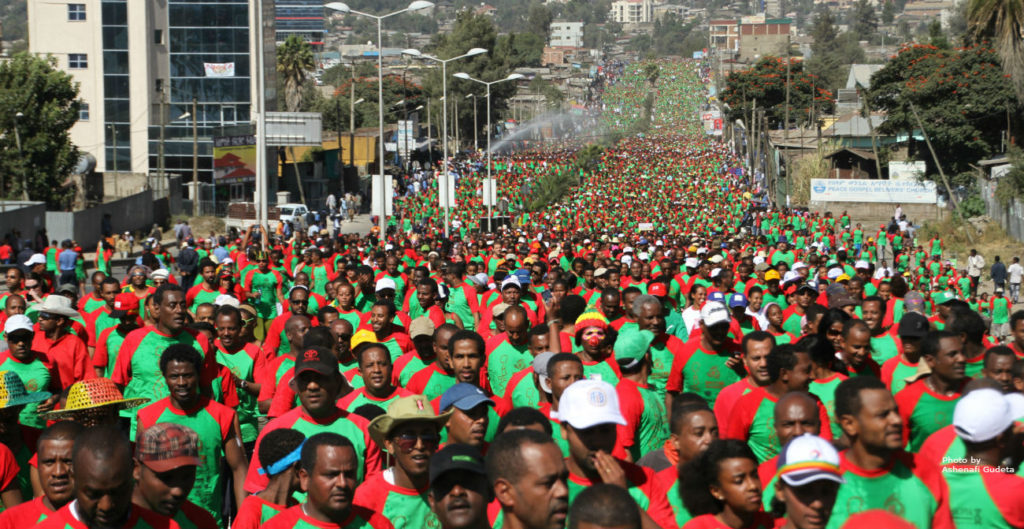
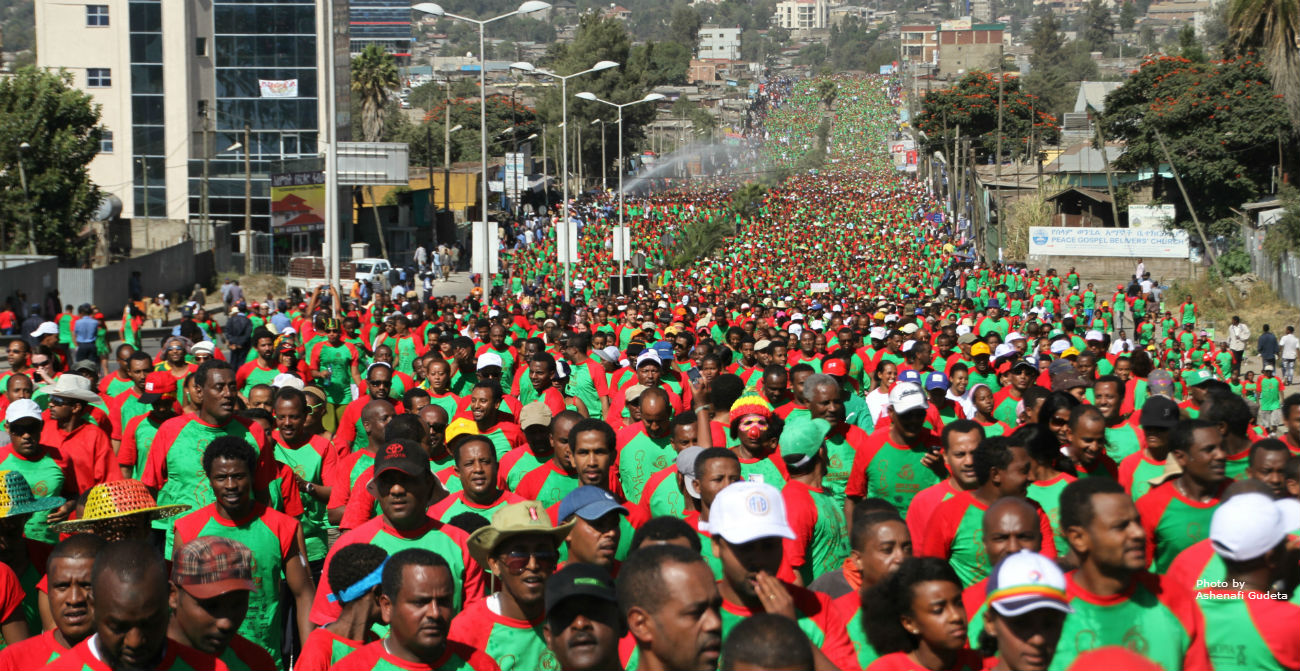
This article was originally published in The Ethiopian Messenger, the quarterly magazine of the Embassy of Ethiopia in Brussels.
Since the downfall of the Derg regime in 1991, Ethiopia has achieved impressive results in terms of living conditions of its people. This was only possible after a decade devoted to reconstruction of the country and stabilization of its institutions and another fifteen years during which sectors such as education and health were dramatically developed.
When the military dictatorship of the Derg was overthrown on 28 May 1991, many saw this day as the beginning of the end. Several politicians and political analysts, both in Ethiopia and around the globe, expressed their deep concerns that the country, sooner or later, would balkanize and disintegrate into several smaller States. Such conclusions did not come from nowhere. The country was in predicament: Ethiopia was one of the poorest countries in the world, had experienced almost 50 years of protracted civil war and had never implemented democratic values for several years, resulting in tensions between its various ethnic groups. Those factors, coupled with the existence of armed groups and the proximity of the ever turbulent Horn of Africa region made many assumed that Ethiopia would not be able to escape disintegration.
Despite these hardships, the ruling coalition party EPRDF and most importantly, the majority of the Ethiopian people shared the vision of a better and prosperous Ethiopia ahead of them and worked hard to make it a reality. The challenges and achievements of the past 25 years can be divided into two periods: the first 10 years (1991-2001) and the last 15 years (2002-2015).
The first 10 post-war years were devoted to the reconstruction and stability of the country, by rehabilitating the huge dismantled army personnel of both the military regime and of the incumbent Government-EPRDF; negotiating with the various armed and non-armed political parties, negotiating a new form of government; drafting and ratifying the Constitution, implementing the peaceful secession of Eritrea from Ethiopia and later, defending the sovereignty of the country against the aggression of the Eritrean military on Ethiopia in 1998. Alongside those essential activities, two main economic policy papers namely ‘Sustainable Development and Poverty Reduction Program (SDPRP, 1995-1997) and Poverty Alleviation and Sustainable Development Program (PASDEP, 1998-2002) were issued to fix the dwindling economy and reduce poverty.
The beginning of this period was full of challenges. The central committee of one of the founding members of the ruling party, the TPLF, divided in two and many amongst the faction group turned against the ruling party. On the other hand, this situation gave the ruling party an opportunity to establish clear policies and strategies on important issues, such as its political ideology (the revolutionary democracy) its economic philosophy (the developmental democratic State), on foreign relations and security, agricultural and industrial development, good governance, education and health and many other areas.
Discussions and consultations on those policies and strategies were held at all levels of the society. The results registered in different sectors were miraculous.
The main cause behind the protracted civil war that shake Ethiopia for the last centuries, and specially from 1900 onwards, was the lack of acknowledgment of Ethiopia’s ethnic, linguistic, cultural and religious diversity. Several attempts to create a ‘one language, one people of Ethiopia’ had failed consistently because the existing reality in the country does not allow to do so. Regrettably, such attempts not only caused the country to sink deep into poverty and backwardness, but also claimed the lives of many precious sons and daughters of Ethiopia. The ruling party realized early that any governing institution committed to bring sustainable peace and stability to the country had to accept this diverse reality and create a political system able to accommodate the different ethnicities, give equal opportunity to all to decide on the issues of the country and, most importantly, leave the free choice to become ‘Ethiopian’ to each and every ethnic groups in the country.
Another important issue worth mentioning here is that, throughout the country’s history, the Ethiopian people has believed, and some still believe, that power comes from heaven, which pushed the people to blame themselves for any fault committed by their leaders. If a ruthless king or leader reigned on the country, the people concluded that the almighty God had punished them for their sins by giving them such a brutal ruler. In consequence, instead of joining forces to topple such leader, they only prayed for a divine intervention.
Until 1991, Ethiopia had never experienced a popular election to choose a leader, nor had there been the possibility of forming political parties to advance the people’s diverse opinions. In fact, at some point, Emperor Haileselassie had even decreed that “the people and land of Ethiopia belongs to the king”. One of the tasks of the EPRDF, the incumbent ruling party was therefore, to sensitize and create awareness that power is not coming from heaven, and that the people is the real owner of power. This was a revolution compared to what the people used to believe in.
In view of giving the free choice to the people of Ethiopia, the EPRDF adopted a federal democratic system that enabled each region and ethnic group to freely elect their leaders in their respective administrations, send their representatives to the National Parliament and the House of Federation, give them the right to assume responsibility in the federal structures, and to decide on the matters of their country alongside their fellow Ethiopians.
Today, there are 79 regional and nationwide political parties legally registered in Ethiopia. Out of them, 57 have participated in the last national election in 2015. Despite the lack of coherence, perseverance, seriousness and the mixing of legal and illegal activities by some members of opposition parties, (in my opinion, only one party is in a serious business of politics) in 2005, the opposition managed to gain nearly 1⁄4 of the seats within the National Parliament. Since 1991, Ethiopia has conducted five national and several regional elections in a peaceful, free and transparent manner. Knowing that power is now in the hands of the people, millions are coming out to cast their votes. Unlike before 1991, Ethiopians are now freely airing their opinions and disagreements through different means.
Alex De Waal, in his article “Is the era of great famines over?” published on 8 May 2016 in the New York times, summarized the political achievements of the country as follows: “famine isn’t caused by overpopulation, and as Ethiopia’s experience shows, it’s not a necessary consequence of drought. Politics creates famine, and politics can stop it.”
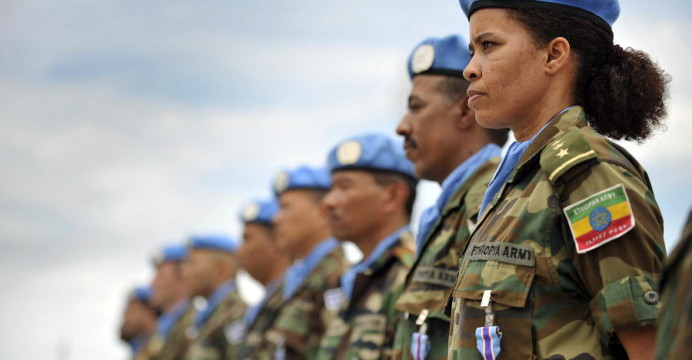
Today, Ethiopia enjoys a very positive and solid relation with all countries without distinction from North to South and East to West. It has ensured its stability and has become a regional peace anchor in terms of peace negotiations, notably in Somalia and South Sudan, and in peacekeeping missions. It has participated in eight UN peacekeeping missions since 1991, is currently serving in four missions and is the largest contributor of peacekeeping troops in the world. Ethiopia is actively playing its role in international fora, notably in the area of climate change, migration and on the fight against terrorism. Ethiopia is also home to more than 800,000 refugees.
New World Encyclopedia had described Ethiopia in 1991 as follows “in this ancient land, with a proud history, the real challenge now that a cruel and despotic regime has been overthrown is to feed, educate and house the people including those displaced by the Eritrean-Ethiopian War. This may qualify as a war that had to be waged, to overthrow a cruel regime.”
Indeed, the Ethiopian Government had to wage a war to dismantle the deeply rooted poverty and backwardness from the country. The popular slogan of the Ethiopian Government since then is that “The number one, number two and number three enemy of Ethiopia is poverty”. The fight against poverty was a monumental challenge. Not only the physical poverty was immense, but also the perception that the people had of poverty had to be transformed, as most of the people were living in agreement with poverty. A revolution of mentality had to take place in order to create the required change. The Government opened discussion forums, “Ethiopian Renaissance” being at the center of all the discussions both at the leadership level and the population at large.
Those consecutive discussions have helped the Ethiopian population to look back to their proud history, to compare it with the current despicable situation of poverty and provoked them to revolt against poverty. It helped them to understand that they deserved a better life than what they were actually in. The late Prime Minister Meles Zenawi owes us honor for his invaluable role in shaping the ideas, and provoking the people and his administration to revolt against poverty. At some point, he described the poverty in Ethiopia as a big rolling stone descending from a very high mountain in a very high speed. Those who fail to run faster than the rolling stone get destroyed by it. He urged that the leadership and the people should run faster than the monster (the poverty) to rescue the country and the people from failure. And it worked: Ethiopia has a totally different image today.
According to the World Bank report on Ethiopia, “Ethiopia’s Great Run: The Great Acceleration and How to Pace It” published in February 2016, economic growth increased from 0.5% in 1981-92 to 4.5% in 1993-2004 to an average of 10.9 from 2004-2014. Those tangible performances have been achieved through the adoption and implementation of a series of structural economic reforms. The report went on saying that poverty declined substantially from
55.3% in 2000 to 33.5% in 2011. The recent performance assessment of the Growth and Transformation Plan I indicated that poverty had declined to nearly 22% at the end of 2015. Despite this rapid growth, Ethiopia managed to remain one of the most equal countries in the world with a Gini coefficient of consumption of 0.3 in 2015. The report acknowledged that progress went beyond monetary dimensions. Life expectancy had been increasing by about one year annually since 2000 and is now higher than in the low income countries and Sub-Saharan African averages. According to the report, Ethiopia has surpassed many of the Sub-Saharan African countries in several other key development indicators, including child and infant mortality, and as a result, Ethiopia has attained most of the Millennium Development Goals, the report ascertained.
Ethiopia has witnessed a complete transformation of the structure of its economy. As in many developing countries, agriculture previously had dominant role in the economy, but today the service sector dominates the economy with 46% of GDP as compared to 40% for agriculture. Tax to GDP ratio has reached 13% from almost none in 1991. Domestic saving showed an amazing increase to reach around 22%. The total road coverage has reached 120,000 km. 70% of the Ethiopian villages have connected with roads and 96% of the country is covered with telephone network.
The country has also registered commendable achievements in the field of energy production, infrastructure, housing program and employment opportunity among others. Energy production has increased to more than 3870 MW at the end of 2015 from less than 200 MW in 1991. Five hydroelectric dams and two wind energy fields were constructed in the past 25 years, and an expansion on the wind energy, new projects in the thermal and solar energy and more dams are underway.
Under the “Education for all” moto, each kebele in Ethiopia is now entitled to one primary school, two to three secondary schools and at least to one preparatory school in each woreda (district). Overall, there are 42,330 elementary-secondary schools (from only 4,278 primary and secondary schools in 1991) and more than 26 million students in school in the country (compared to 2 million out of a population of 48 million in 1991). Primary school coverage has reached 96%, and 41% of secondary school age students are in school. As the reader might be aware of, only South Africa and Egypt have achieved 100% primary school coverage in Africa. The two countries took 40-50 years to reach that level. But according to the current performances, Ethiopia could reach the same level in only 27 years: the Ethiopian Ministry of Education projects to reach 100% primary school coverage by 2018. Most importantly, Ethiopian children are today studying in their mother tongue, and 51 different languages are used as mediums of instruction in primary schools.

In 1991, there were only two universities in Ethiopia. Today, there are 36 public universities and this number will increase to 44 at the end of the second Growth and Transformation Plan (2015-2020). Private higher education has also increased as part of the general liberalization of the economy. There are now approximately 66, starting from no single one in 1991. Private institutions offering undergraduate degree programs in Ethiopia and the private sector accounts for approximately 25 percent of the country’s undergraduate enrollments.
As part of the 70/30 strategy, (70% natural science and 30% social sciences) the Government has established 10 technology institutes and two science and technology universities. All in all, there are more than 600,000 students in the Ethiopian universities today.
On the other hand, in view of educating youths who fail to pass to higher educations with different skills and techniques, 324 public and 516 private Technical and Vocational Education Training institutions (TVET) have been created, which enroll 288,000 students.
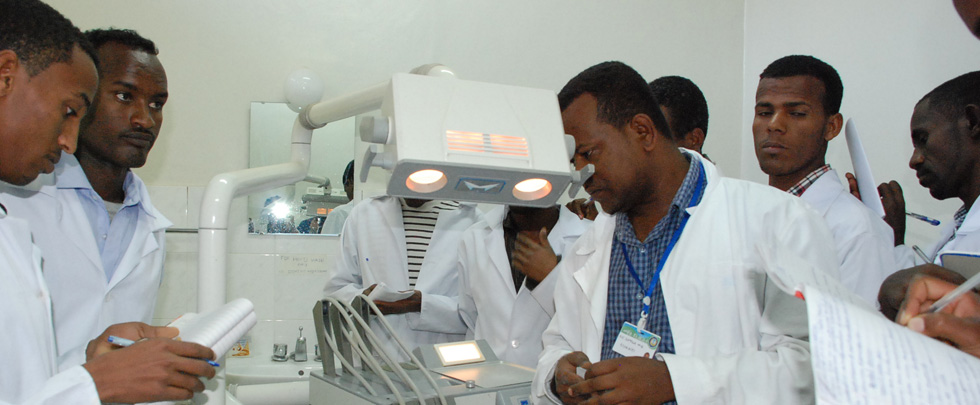
Ethiopia’s health policy is focused on prevention. With the moto of “1 for 25,000”, one health center for twenty- five thousand residents, Ethiopia has achieved incredible results in the health sector in the past 25 years. According to the Ethiopian Ministry of Health, in 1991, the country’s health coverage was 38% and has now reached 99%. The death rate due to communicable diseases such as tuberculosis, HIV and yellow fever has been reduced substantially. The following table presents key indicators of the achievements in the last 25 years.

Furthermore, the number of mothers’ death during labor has dropped to 353/100,000 from 1400/100,000 and child & infant mortality has reduced by 70%.
Those are some of the main achievements accomplished in the past 25 years. They have not only changed the image and wellbeing of Ethiopia and its people, but most importantly, they have inspired youngsters to revolt against poverty and to commit themselves to do whatever is necessary to win against it. But this doesn’t mean that everything is perfect. There are still immense challenges to be overcome. 22% of the population is still living under poverty and nearly 80% of the population are living in rural areas mostly depending on rain fed agriculture. The ever increasing demand of the society for improved good governance, increased supply of energy and potable water, will require immediate and accelerated actions. But again, when looking at the recently launched fight against corruption and maladministration coupled with the commitment and determination of the Ethiopian people and leadership; it appears clearly that Ethiopia has a very bright future ahead to live and to enjoy its Renaissance.
This article was originally published in The Ethiopian Messenger, the quarterly magazine of the Embassy of Ethiopia in Brussels.
The cancelation of the Addis Ababa Master Plan following demonstrations in the Oromia region should not prevent us from loosing sight of the broader picture. The region of Oromia is the master of its own path and has the necessary tools to accelerate its own development.
Following the collapse of the military regime in 1991, the Oromia Regional State was established as one of the federal states constituting Ethiopia. Since then, the Regional Government of Oromia has been striving to carry out a rapid and sustainable development throughout the region. A strong foundation of democracy was built by the Regional Government in order to create conducive environment for its people. Moreover, promoting the culture, the language and the history of the people has been one of its fundamental objectives. Nowadays in Ethiopia, the Oromo people has unconditional right to self- determination, the right to speak, write, and to develop its own language.
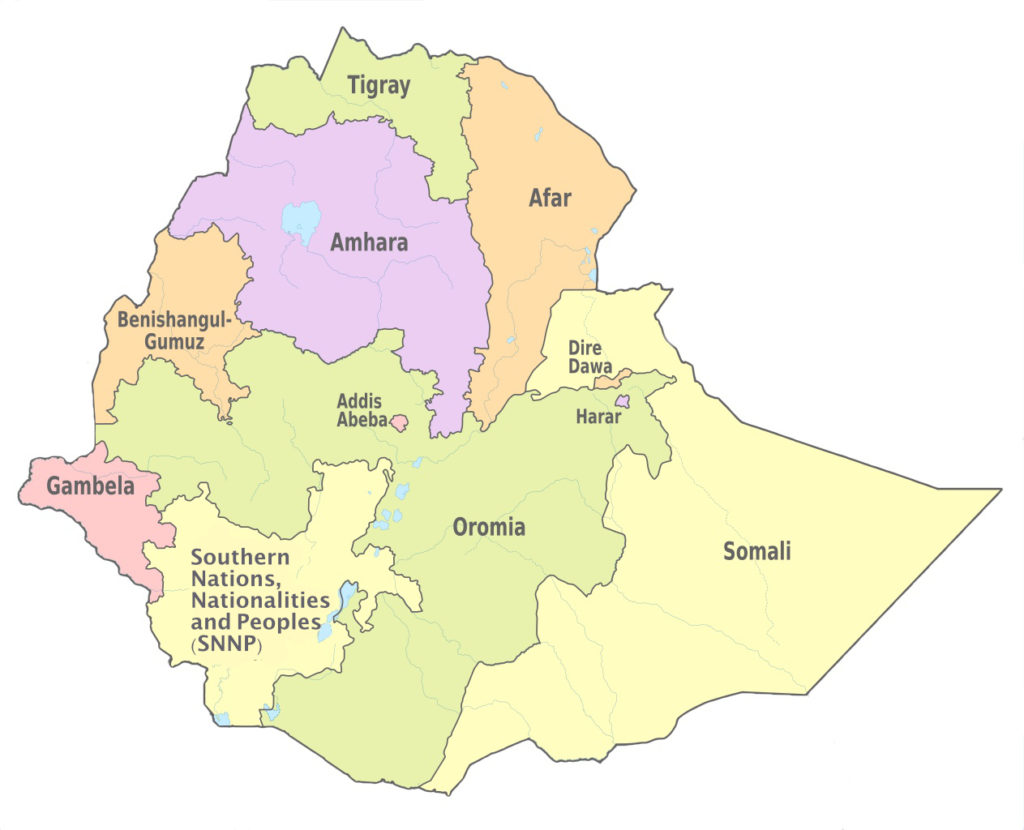
As enshrined in the Article 39 of the Constitution of the Federal Democratic Republic of Ethiopia, the people have the right to preserve their history and to express, develop, and promote their culture. Under the incumbent government, the region is administered by its own inhabitants. Similarly, the Afaan Oromo language, which was only confined to private use during both the past imperial and military regime, is currently the official working language of the region. The remarkable progress made in the region’s social, economic and political sectors in the last 25 years is due to unwavering commitments of Oromia Regional government and the contribution of the public at large.
One of the main reasons for the major achievements over the years is the introduction of clear policies and strategies aiming at enabling the rapid socio-economic transformation of the society. Tremendous achievement has been registered through rural and urban development strategies. Due to these and other efforts of the Government, notable changes can be seen in the lives of the population and promising results are regularly registered in terms of economic development. But the introduction of clear policies and strategies is not the sole cause of this impressive progress. Without public participation and the domestication of development programs, all the aforementioned results would not have been achieved. The ruling party has been well aware of this from the first day in the office. Since then, the intention and will of the Government is to ensure that all Ethiopians get equal opportunity to improve their economic situation and to promote equitable distribution of wealth among them and finally to bring consensus and building a political and economic community by ensuring lasting peace, guarantying a democratic order, and advancing economic and social development as stipulated in the Constitution. For instance, the Addis Ababa-Oromia integrated master plan is a good example of the attention paid to the socio-political and economic development of the people. According to Article 89/6 of the Federal Government Constitution Economic objectives, “Government shall at all times promote the participation of the people in the formulation of national development policies and programs; it shall also have the duty to support the initiative of the people in their development endeavors.”
The Addis Ababa-Oromia integrated master plan aligns with the context of the Constitution. Thus, this article is indicative of the emphasis given by the government to people’s right to get access to information which basically emanates from developmental governments firms, as provided by the Constitution. The Addis Ababa integrated master plan was a work in progress and at its initial stage when the peaceful demonstration against the master plan started in 13 Nov 2016 near to Ambo city and its surroundings. However, the demonstration gradually changed its form and led to the destruction of public and private properties and loss of human life.
From 23 to 27 February 2016, following the violent demonstration in some parts of Oromia regional state of Ethiopia, the Oromo People’s Democratic Organization (OPDO), one of the coalition member of the ruling party, held thorough discussions in the city of Adama. The main points of discussion included the situation of the Oromia region, good governance, democratization, rent seeking practices and issues related to unemployment of young generation. The OPDO has renewed its commitments for its people to solve the challenges raised during the discussion. In addition to this, the ruling party has also taken actions on corrupt officials in the region. More than eight hundred officials were dismissed and will be held accountable for their wrongdoings.
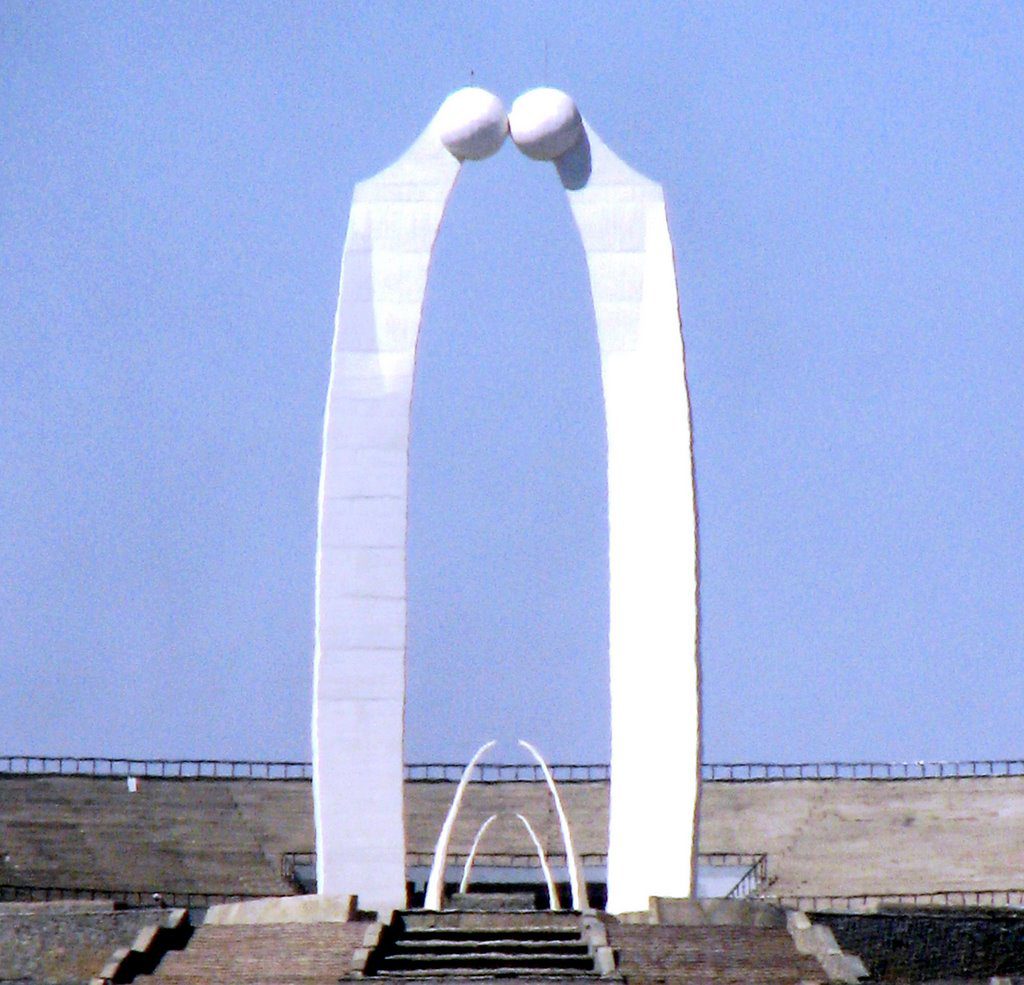
Currently, the Oromia Regional State has unveiled a project worth 2.4 billion birr (about 100 million euros) to fight unemployment in the State. Out of this, a project worth 300 million birr (about 12 million euros) that could create jobs for 832,000 young people will be implemented within the coming months. The project will help to consistently alleviate unemployment in the State on the short and long term. During the announcement of the project, Redwan Hussein, Minister for Youth and Sports, said that the National Council, which was established by encompassing 17 institutions to assist job creation activities, will offer support for the success of the project. The discourse and speeches of officials of the region also indicate that while they take pride in the progress that has been made, they are acutely aware of the massive challenges that lay ahead.
Today, after a long struggle, the Oromo people who were coerced and denied their right under past regimes have obtained justice under the current Constitution. As a consequence, the current major issues are economic and not political, especially for the younger generation. As a nation, the Oromo
people have came a long way in the last 25 years, yet it has some unfinished businesses to realize. But a better future cannot be achieved if the current stability is lost. More than anyone else in the region, the Oromia region has learned from its own history how peace and stability are essential. The people has to maintain, nurture and develop the peace and security that it has in its hand. There is no development without peace and there is no lasting peace without development. The people is a master of its destiny; and to chart its future.
This article was originally published in The Ethiopian Messenger, the quarterly magazine of the Embassy of Ethiopia in Brussels.
Hydroelectric dams are central for the development of Ethiopia which aims to become a light manufacturing hub and a middle income country by 2025. Electricity could also soon become a major export item.
Celebrating the 25th anniversary of Ginbot 20, which marks the end of the military dictatorial rule of the Derg regime, Prime Minister Hailemariam Desalegn said the country has managed to make significant progress over the last quarter of the century. Among others, he said remarkable successes have been achieved in attracting investments, addressing unemployment and housing problems, empowering women, protecting the rights of citizens, expanding telecom and electricity facilities as well as increasing the productivity of small-scale farmers.
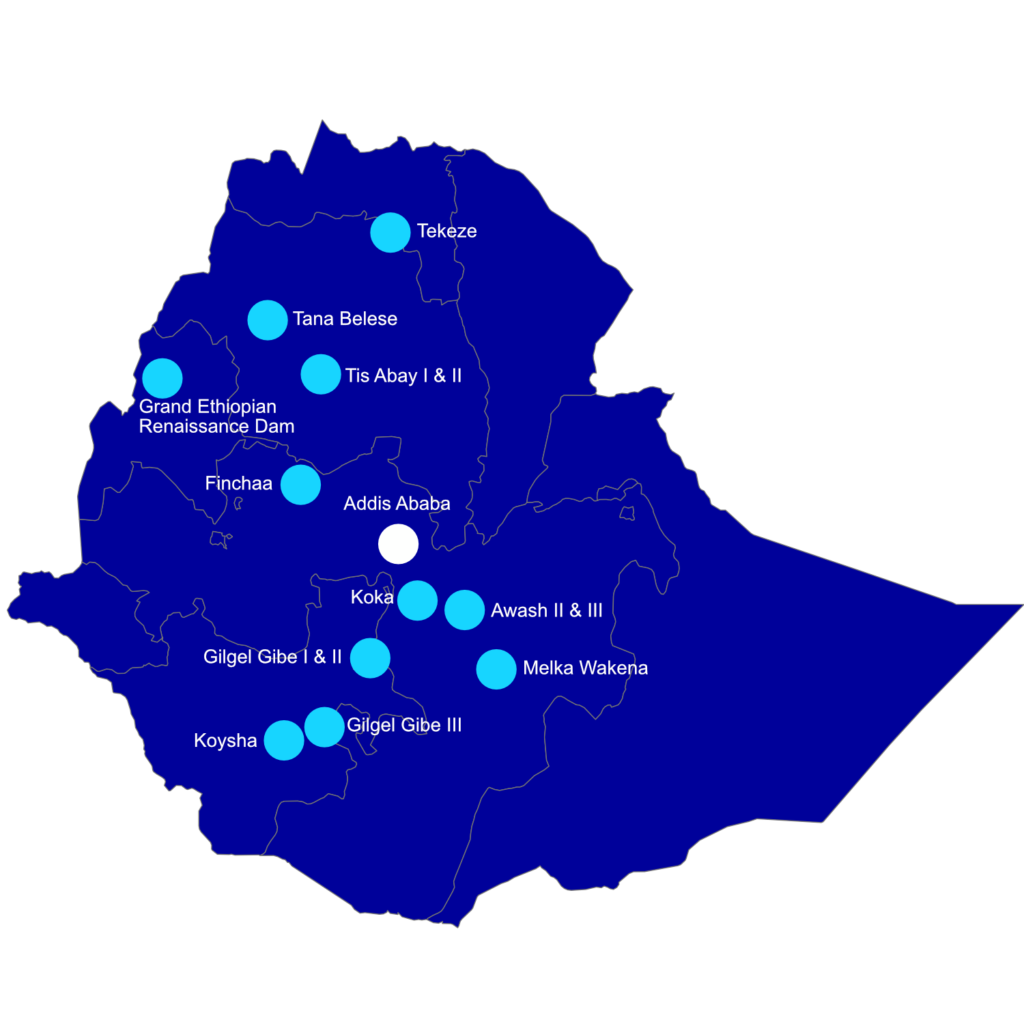
Ethiopia was able to make such progress in only 25 years thanks to a visionary plan designed by ruling coalition Ethiopian People’s Revolutionary Democratic Front (EPRDF) aiming at eradicating poverty and accelerating a development benefiting to all Ethiopians. This vision was implemented through successive national development plans. The latest of these plans are the five-year Growth and Transformation Plans (GTP) focusing on increasing productivity in the agricultural sector, developing the industrial capacity of the country and building an important infrastructure benefiting both the population and the development of the economy. The first and the second GTPs (2010-2015 and 2015-2020) played an instrumental part in helping the country’s economy to reach a double-digit growth, which is expected to continue in the years to come. The target of this strategy is to achieve middle-income status and make the economy climate resilient by 2025.
This ambitious plan can only be achieved through the development of key sectors like light manufacturing and agro-processing. These industries not only provide jobs to Ethiopians but also considerably increase the added value of goods initially produced in Ethiopia like coffee, bamboo and other agriculture products as well as products related to breeding such as hides that can be transformed into shoes and other leather products. To encourage this development, the Ethiopian Government designed a policy of industrial park developments as well as a set of incentives for investors in these sectors. But another crucial factor to attract investors and support industrial development is access to energy. Already in the past decade, the rapidly developing industrial sector has driven the energy demand in Ethiopia, now growing at a yearly rate of about 30%.
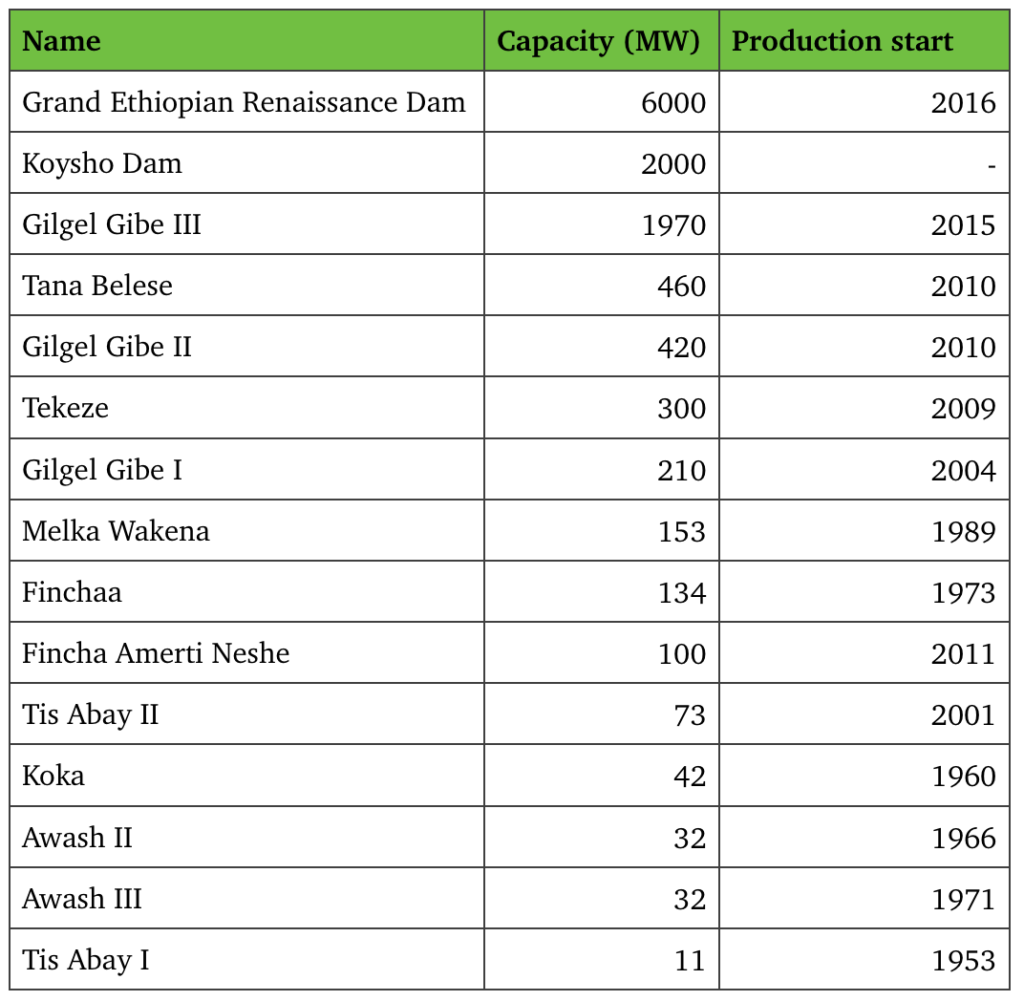
During GTP I, electricity service coverage in the country has increased from 41% in 2009-10 to 54% in 2013-14. The main objective during the GTP II is further increasing of energy generation, transmission and distribution to satisfy domestic energy demand with production surplus directed to export market. Thus, the Ethiopian government plans to raise electricity output to 17,346 MW during GTP II from an initial capacity of just over 2,200 MW. Besides wind, solar and hydrothermal sources, this electricity generation will mainly come from hydro-power. With a hydro-power potential of 45,000 MW largely untapped until today, Ethiopia has a real opportunity to meet these targets and transform its economic plans into reality.
The country has already planned and achieved the construction of several hydro-power facilities. Plants constructed in the last ten years include Tekeze (300 MW, completed in 2009), Tana Belese (460 MW), Gilgel Gibe II (420 MW, completed in 2010), Gilgel Gibe III (1970 MW, completed this year, already in operation). Two major dams are currently under construction: Koysho Dam (2,200 MW) and most importantly the Grand Ethiopian Renaissance Dam (6,000 MW, to be completed in 2017).
These dam projects imply that some populations living in areas near to the dams and the new bassins have to be relocated. The government is using this opportunity to give local populations the chance to enhance their quality of life. In fact, relocated populations were provided with more modern housing than previously as well as access to basic infrastructure like health and education that had not been available before in these districts. Most of the relocated people are positive about this change, as independent researches have shown (Read for example the interview with Jennifer Veilleux on Catherine Pfeifer’s blog, 9 July 2016: http://ethio.be/1qZCTqz).
The GERD hydro-power project is at the center of Ethiopia’s development strategy and will be vital to achieve the status of middle income country by 2025. The construction of this flagship project started in 2011 and has nearly reached 70% completion by mid-2016. The dam is expected to start operations this year with a full completion expected in 2017. Its total cost is estimated at USD 4.7 billion, and it is entirely funded by the Ethiopian Government and the Ethiopian population, testifying the strong national commitment to achieve this project. The construction is carried out by the Ethiopian Electric Power Corporation (EEPCO) with subcontractors including the Italian firm Salini Impregilo providing the concrete, and the French company Alstom for the supply of turbines and generators.
Once completed, the Grand Ethiopian Dam will be the largest dam in the continent: 1,780 meter long and 145 meter high. Its estimated capacity of 6,000 MW is equivalent to the combined power of four nuclear reactors. Later in 2016, two of the 16 expected turbines of the dam will start to generate about 750 MW of electricity.
Since the GERD is being constructed on the Blue Nile that has its source in Ethiopia and flows to Sudan and Egypt, Ethiopia took the initiative to establish an international panel of experts from the three riparian countries and experts from other countries. This initiative can be considered as unprecedented since no other country took a similar initiative on its own before. This international panel studied the impact of the dam on the downstream countries. Even though the experts concluded that the dam will not have a significant impact on the downstream countries, Egypt raised concern about its water shares. Accordingly, tripartite ministerial meetings were organized between Egyptian, Ethiopian and Sudanese representatives at ministerial level, in order to guarantee a strong and continued dialogue. In this framework, it was agreed that a Tripartite technical committee was to meet regularly to assess technical aspects of the project and two consultancy firm were selected to study the social and environmental impact of the dam.
A major step towards more regional cooperation around the dam was taken on 23 March 2015 in Khartoum, when the leaders of Egypt, Ethiopia and Sudan signed a declaration of principle on Ethiopia’s Grand Renaissance dam project. “We could cooperate and accomplish great things or disagree and hurt each other… we have chosen to cooperate,” the Egyptian President El-Sisi stated at this occasion. On his side, Ethiopia’s Prime Minister Hailemariam Desalegn stressed that the Renaissance Dam will not cause any significant harm to the Egyptian people: Egypt and the rest of the Nile Basin countries are one family, he said. Moreover, on 1st of June 2016, Egypt’s foreign affairs minister Sameh Shoukry noted that the Grand Ethiopian Renaissance Dam has become a reality and that it is “pointless to bury our heads in the sand by not acknowledging a tangible physical reality.” The road is open for the future collaboration on this dam that will bring major benefits to the whole region.
The Koysho Dam which will be built on the Omo river will be a further step to achieve the hydro-power target set in GTP II. Announced on the 10th of March 2016 by Ethiopian Prime Minister H.E. Hailemariam Desalegn, the Koysho Dam will have a final capacity of 2,200 MW. Worth 2.5 billion euros, the new project includes a 170 meter high rolled compacted concrete dam and will also appeal to the Italian firm Salini Impregilo for the construction and to another Italian firm for its financing.
The neighbours of Ethiopia have soon expressed their interest to benefit from the abundant and cheap power generated by the dams. Supported by an international organization established in 2005, the Eastern Africa Power Pool (EAPP) and by a 22 billion African Union backed project to develop a pan-continental electricity highway by 2020, the building of infrastructure to interconnect national grids of countries in the region is underway to facilitate regional integration and hence to realize sustainable growth and development. Planned since 2006, the construction of high voltage line interconnecting the Ethiopian and the Kenyan grids are currently being started, and while the current agreement between Ethiopia and Kenya is for 400 MW of power export, this is expected to further increase in the future. Ethiopia already provides 100 MW electricity to Sudan and up to 50 MW to Djibouti and electric power will soon be supplied to South Sudan and Somalia. Grid links to Uganda, Rwanda, Tanzania and even to Yemen across the Red Sea could also be considered. The power export not only increases the foreign currency earning of Ethiopia, but also strengthens the relations among the countries which would have a pivotal role in stabilizing the region.
Combined with a vast, cheap and trainable labor force, robust infrastructure development, political stability and a strategic location, this energy achievement of Ethiopia will considerably boost the manufacturing capacity and attractiveness of the country. The fast development of hydroelectric dams in the country and especially of the Grand Ethiopian Renaissance Dam is also a sign demonstrating the ardent commitment of the Ethiopian people for the development of their economy. Furthermore, these new electricity production facilities will enable Ethiopia to export cheap electricity to neighboring countries. This will have a positive effect on regional integration and development. In this sense, not only the Grand Ethiopian Renaissance Dam but all the hydroelectric projects in Ethiopia have the positive consequence of strengthening regional integration and are not only a condition of Ethiopia’s economic development, but also an important factor for the prosperity of the whole region.
Thanks to the commitment of its people and government, Ethiopia is on a right track to make one dream come true: accelerating its development to eradicate poverty, attain economic well- being and reach the status of a middle-income country by 2025. The hydroelectric development of the country will massively contribute to reach these goals.
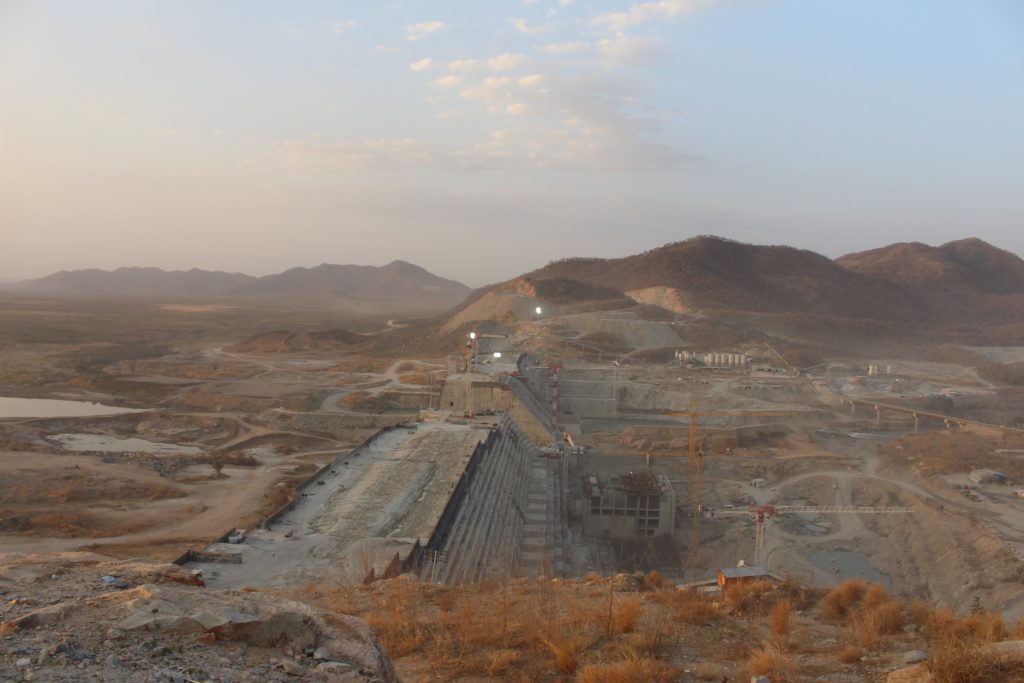

This article was originally published in The Ethiopian Messenger, the quarterly magazine of the Embassy of Ethiopia in Brussels.
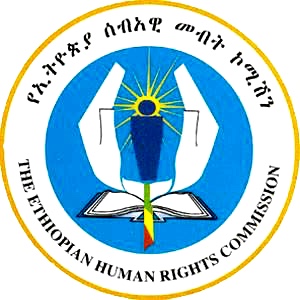
While the progresses achieved in the last two decades by Ethiopia at the level of political stability and economic development have been widely aknowledged, the efforts to improve the human rights situation have not drawn enough attention despite a committed action plan.
Ethiopia is an immense and rich society facing political and human rights challenges. After the fall of the military dictatorship of the Derg, the Government has adopted a Constitution based among other principles on the human rights, ratified international conventions and established institutions to guarantee the respect of human rights, such as the Human Rights Commission and an Ombudsman. Though its human rights record has been steadily improving since the terrible era of the Derg’s regime, Ethiopia is still regularly criticized for the state of human rights in the country by international observers and organizations. One reason for this is that while Ethiopia’s booming economy and impressive development gains are now globally recognized, the country’s current efforts to ensure the human rights of its population are less publicized.
Acknowledging the fact that the Ethiopian democracy is still in its early stages, the government has made numerous efforts during the past decades, such as its National Human Rights Action Plan (NHRAP). Launched in 2013, Ethiopia’s NHRAP is an ambitious program aiming at ensuring and strengthening the state of human rights of its more than 90 million citizens. The goal is to have it fully implemented within three years. On many aspects, this plan is representative of the country’s strategic approach: learning on the job, monitoring progress and changing course if necessary and working hard in order to rectify any existing flaws.
Ethiopia’s National Human Rights Action plan is the result of a long and organic process of various consultations. The concept of National Human Rights Action Plan was first developed as part of the second world conference on Human Rights held in Vienna, in 1993 which culminated in the adoption of the Vienna Declaration and Program of Action. In Ethiopia, the preparation for the NHRAP began in earnest in the course of the National consultative workshop, which was held under the aegis of the Ethiopian Human Rights Commission, in cooperation with stakeholders in March 2010 in Addis Ababa. This national forum was attended by representatives of government institutions, civil society organizations and international agencies. The formal decision of the Ethiopian Government to develop the National Human Rights Action Plan was publicly announced the following year, on 1st September, 2011 by H.E. Hailemariam Desalegn, then Deputy Prime Minister and Minister of Foreign Affairs.
Presented in October 2013 in its final version, the National Human Rights Action Plan did not introduce any new laws for Ethiopia but instead analyzed what actions should be taken to make sure existing laws were effective in bringing benefit to the people. It included nearly 60 recommendations to cover gaps in sectors such as education, health and culture and identified gaps in the justice sector, like the need for guidelines on the use of force by the police, against suspects or condemned individuals in prisons among others. This plan – the first in the country’s history – was above all an indigenous intervention, product of a strong leadership based on the recommendations made by countries and international institutions on the last Universal Period Review (UPR) – a peer review platform at the United Nations level.
The main objective of the NHRAP is to develop a comprehensive and structured mechanism to advance the respect, protection and fulfillment of human and democratic rights guaranteed by the Ethiopian Constitution. The Action Plan reviews the present human rights situation of the country, identifies potential problems, and sets feasible solutions. The specific objectives of the Action Plan was to indicate the strategic guidelines to promote human and democratic rights in the country; set forth comprehensive, structured and sustainable strategies to respect and protect human rights in the coming years; define means to raise public awareness of human rights and indicate strategies on how the Government could work in collaboration with NGOs legally entitled to work on human and democratic rights, development partners, civil societies and other international stakeholders.
The plan is also a signal showing that the country is open for constructive dialogue as it has been used as a basis to discuss human rights issues with stakeholders such as the United Nations, civil societies and development partners over the past years. In addition, the NHRAP will help to mobilize the public and responsible authorities for improvement of the human rights situation in the nation. Although the implementation of the plan is a significant step in itself, the Government is well aware that the state of human rights in the nation could not be resolved by institutional arrangements only, and that a lot remains to be done in this regard. This is a work in progress, part of a broader, specific Ethiopian way coming from an endogenous perspective and a consistent political resolve.
Upon assuming power in 1991, the EPRDF coalition embarked on the difficult task of restructuring the Ethiopian state. Its major challenges were ensuring the stability and security of the territory while achieving democratic government at home. Ethiopia has come a long way over the past 25 years: in addition to the 10% annual economic growth registered in the country for the past decade, the country’s pro-poor polices are transforming the nation and creating a path to prosperity and stability.
Due to its success, the country’s strategy has often been compared to the four Asian Dragons (South Korea, Taiwan Hong Kong and Singapore), which managed to reach exceptionally high growth rates and rapid industrialization from the 1960s to the 1990s while maintaining authoritarian political systems during their early years of development. This is partially true, since the very basis of the government’s ideology is to ensure the population’s well-being and its ambitious development policy and advocating for a development state agenda was the country’s priority during the first post-conflict years. Moreover, to this day the media tend to focus on the extraordinary economic development of the country, neglecting to report about the human rights efforts. In the late 1990s, the EPRDF methodically set out their goals and have been implementing them with great discipline ever since.
However, Ethiopia’s circumstances are very different from the Four dragon’s. Although Singapore is still a model for several developing countries, it has been decades since the world came to realize that respect of human rights is essential for sustainable economic growth and that a government lacking popular consent is built on shaky foundations. The Ethiopian government is acutely aware that economic development and human rights are intertwined, and that this challenge critically defines the future and the direction of the country. As the late Prime Minister Meles Zenawi once said, “democracy is not just a choice, but a necessity”. While historic Asian developmental states had been authoritarian, such authoritarianism is no longer feasible in our interconnected world, and in Ethiopia’s ethnic and religious diverse society, democracy is a sine qua non, a matter of survival. Ethiopia’ strong commitment to democracy is essential for its survival and to keep the country united.
Increasing attention is being paid to the people’s well-being and opinions. The Ethiopian Human Rights Commission, for instance, recently published an independent inquiry on the protests and clashes which cost hundreds of lives in Oromia and Amhara regions last year. After consulting the victims and their families, officials, elders, religious leaders, representatives of the community, the investigation concluded that, despite a very professional behavior of security forces, some regional security forces had in some cases used excessive force, but also cited bad governance as the main cause for the violence. Lack of response for questions raised by the public, problems of land management, and rent seeking were also mentioned as reasons for the violence.
The Plan matters because it completes the country’s development agenda by decisively linking poverty reduction, wealth creation and development to issues of life, liberty, political rights, equality and equal opportunities for all. The NHRAP should therefore be seen as an “Ethiopia solution to an Ethiopian problem”, adapting universally shared human rights values and norms to the country’s specific context and creating a model distinct both from the Asian model and from a direct importation of the Western model.
This article was originally published in The Ethiopian Messenger, the quarterly magazine of the Embassy of Ethiopia in Brussels.
Tourism is emerging as Ethiopia’s fastest growing economic sector and the government, with its feasible policy and commitment, is registering a rapid growth in terms of generating foreign currency and a rising number of tourists visiting Ethiopia. The newly introduced tourism brand entitled ‘Ethiopia Land of Origin’ is believed to maximize the advantage that remains untapped when compared to the country’s multifaceted tourism attraction.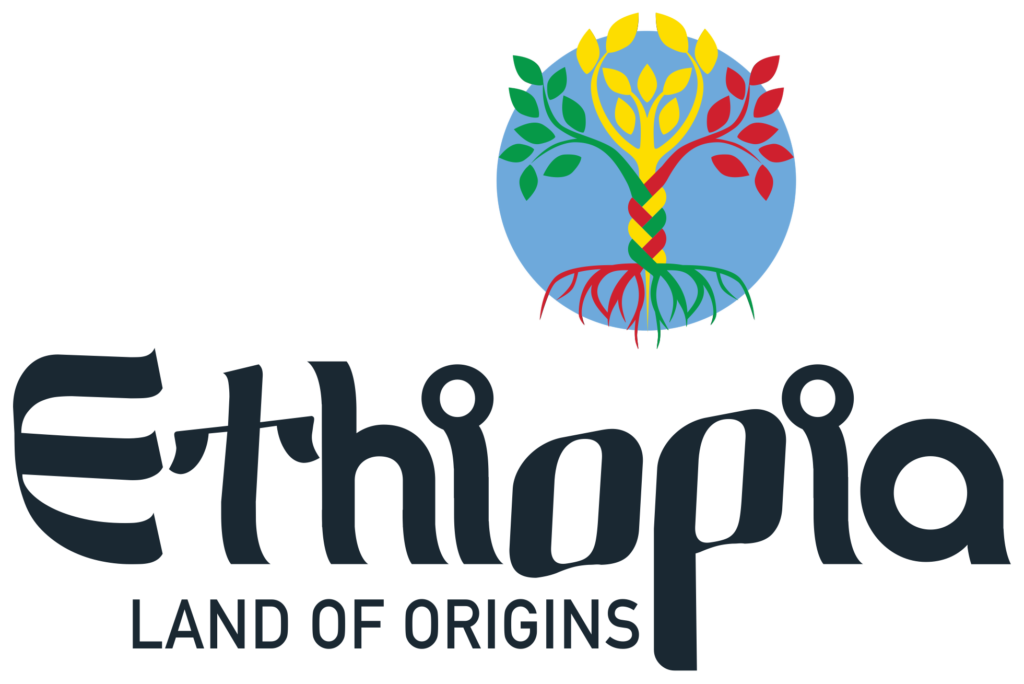
On the world stage, Ethiopia has been holding prominence to this date for being the cradle of humanity. With its unique heritage, the country is the origin of an ancient civilization endowed with a bountiful history and a vibrant culture combined with landscapes of vivid attractiveness. Most tourists who visit Lucy, the “grandmother of humanity” in Ethiopia’s National Museum have the feeling that they are visiting their own ancestors. Ethiopia is also the origin of coffee and the source of the majestic falls of Blue Nile with its smoke-like bounce of water droplets.
The impressive diversity of its people with over 80 languages and 200 dialects makes the country a melting pot of rich culture and civilizations coexisting in harmony and unity. Ethiopia is the only African country with its own distinctive script and calendar and remained sovereign throughout the centuries. The Bible and the Quranic manuscripts mentioned the name of Ethiopia several times and it is believed that Ethiopia is the first country in Africa to adopt Christianity in the 4th century and the first Muslims migrants found safe haven in Ethiopia from persecution. In the stage of the Olympics Games, Ethiopia seizes the designation of being a home to the world’s greatest runners.

Additionally, Ethiopia exhibits nine world heritage sites inscribed in UNESCO’s World Heritage list such as the Aksum obelisks, the magnificent rock-hewn churches of Lalibela and the spectacular landscapes of the Simien Mountains inhabited by the rare species of the Waliya Ibex and the bleeding heart Gelada Baboon. Becoming increasingly aware of the phenomenal gifts of the country, tourists have been increasingly fleeing to Ethiopia for their annual escape. The diversity of its touristic destinations enables visitors to experience exceptional historical, cultural, archeological and natural beauty, placing the country as the most unique tourism destination in Africa. The Ethiopian government, with the view of developing the sector’s contribution to the economy, is keen in implementing several measures. Thanks to the resulting dramatic increasing of the flow of tourists to the country, tourism is now backing the growing national economy.
According to the Ministry of Culture and Tourism (MoCT), Ethiopia earned $2.9 billion in the fiscal year of 2014-15, contributing 4.5% of the country’s GDP. During the last six months of the current fiscal year (2015-16) only, more than $1.7 billion have been raised. The report presented to the Parliament by the MoCT also reveals that tourism generated $2.6 billion in the past nine months as a result of the visit of 700,000 foreign tourists. Moreover, Ethiopia aims to generate $6 billion from the growing sector of tourism by raising the number of tourists to 2.5 million by 2020.
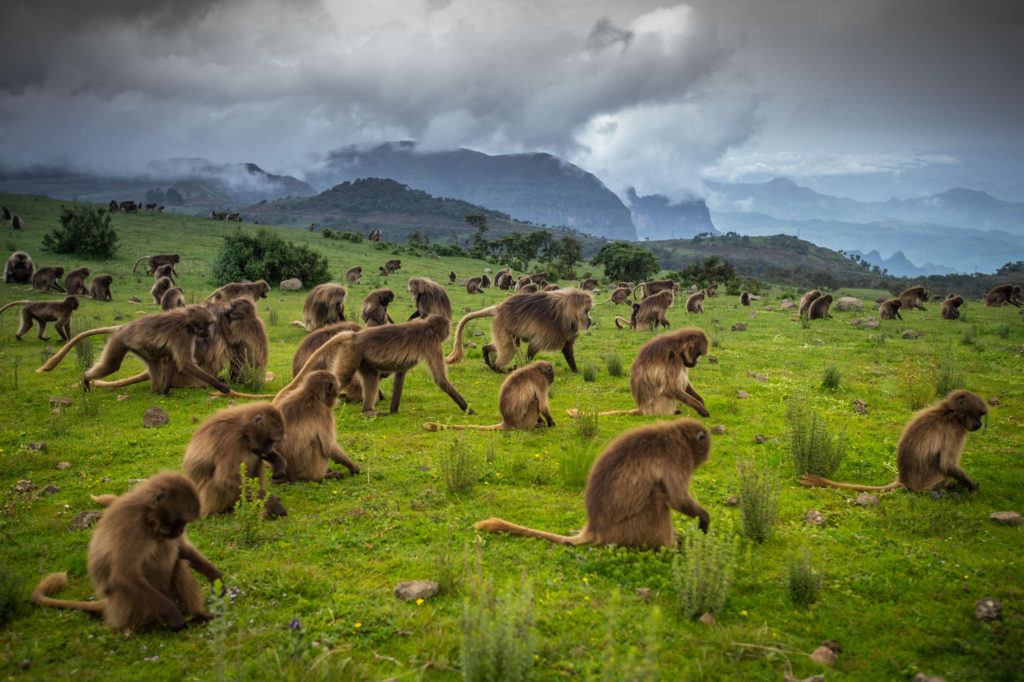
The economic contribution of the tourism sector can also be best explained by the jobs created for over a million people. Similarly, the tourism sector is generating foreign direct investment and the country is under a remarkable infrastructural revolution, meeting the required standards of the sector. Ethiopia is now under massive transformation in many respects of its development in general and of its tourism sector in particular.
The increasing results in the tourism sector recorded so far are a result of the meticulously designed workable policy and determined leadership of the government. This has brought a renowned recognition to the country by several international organizations, such as the European Council on Tourism and Trade which has recognized Ethiopia as the World Best Tourism Destination and awarded Prime Minister H.E. Hailemariam Dessalegn for his leadership role in promoting tourism as a tool for economic development of Ethiopia. The late Prime Minister Meles Zenawi once stated that the development of sustainable tourism “can play more significant role in the war on poverty, both in Ethiopia and Africa as a whole”, elucidating Ethiopia’s determination to be among the top five tourist destination in Africa by 2020.
Ethiopia is the seat of African Union, UNECA and other international and regional organizations and this has created a valuable opportunity for the country to benefit from the conference tourism and from the MICE Industry in general. The opportunities in this sector have not been taped yet compared to the existing potential of the country in business related tourism. The government is striving to sustain the development of the tourism sector by raising the public and private investment and engaging the people at large.
The government of Ethiopia, as part of the second Growth and Transformation Plan (GTP II) that aims to achieve a holistic transformation to the country, introduced in March 2016 a new tourism brand “Ethiopia Land of Origins” replacing the famous “13 Months of Sunshine”. The introduction of the brand was revealed on a newly launched and elegant website(www. ethiopia.travel) to inform the world that Ethiopia is more than ever ready to welcome tourists aspiring to follow the tracks of their ancestors.
The brochure of the newly launched brand presents the 10 unique experiences tourists will be able to enjoy only in Ethiopia:
